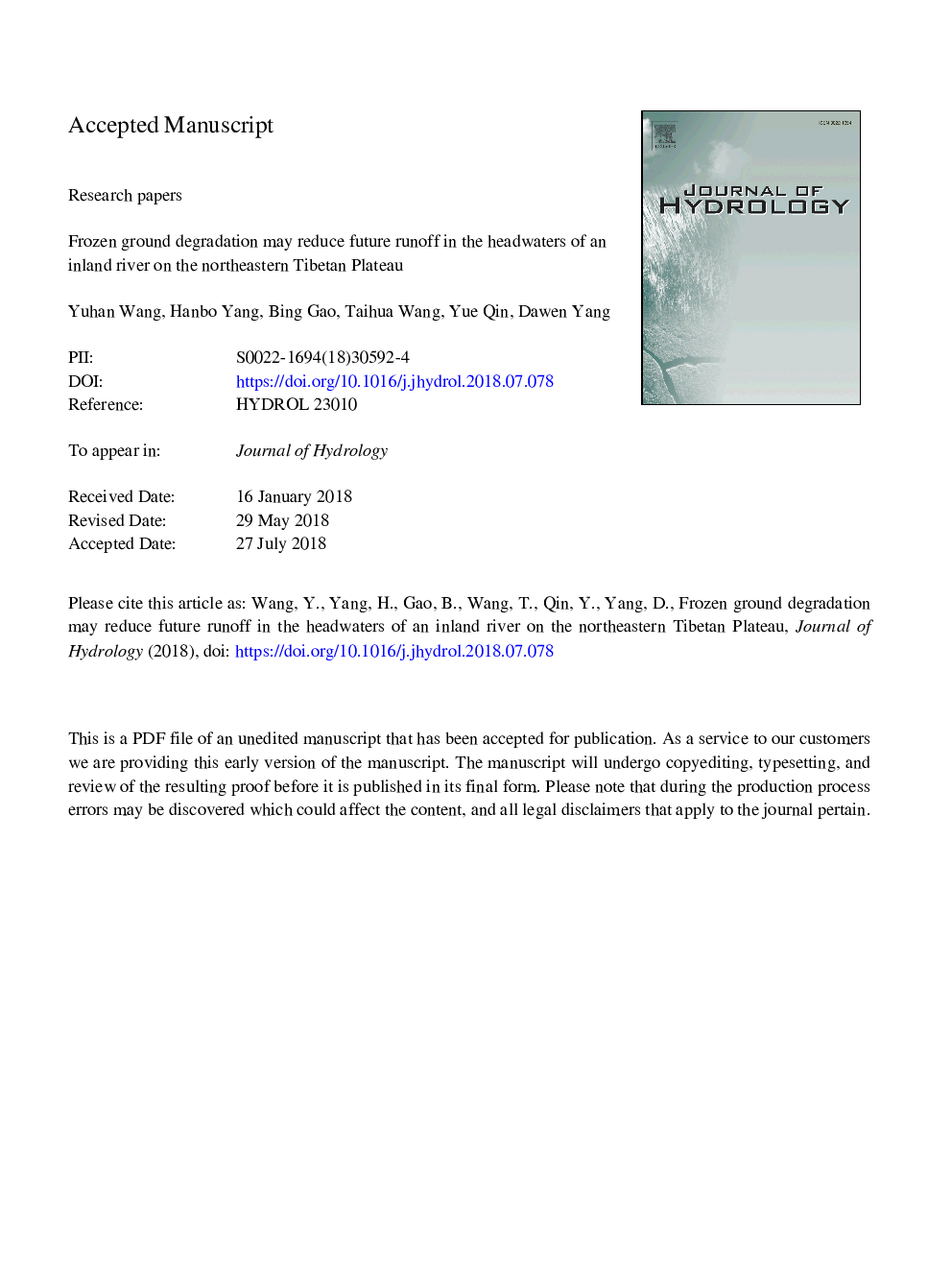| کد مقاله | کد نشریه | سال انتشار | مقاله انگلیسی | نسخه تمام متن |
|---|---|---|---|---|
| 8894539 | 1629890 | 2018 | 53 صفحه PDF | دانلود رایگان |
عنوان انگلیسی مقاله ISI
Frozen ground degradation may reduce future runoff in the headwaters of an inland river on the northeastern Tibetan Plateau
ترجمه فارسی عنوان
تخریب زمین منجمد ممکن است رواناب آتی در رودخانه های داخلی رودخانه ای در شمال شرقی تبت را کاهش
دانلود مقاله + سفارش ترجمه
دانلود مقاله ISI انگلیسی
رایگان برای ایرانیان
موضوعات مرتبط
مهندسی و علوم پایه
علوم زمین و سیارات
فرآیندهای سطح زمین
چکیده انگلیسی
On the Tibetan Plateau, climate change, particularly increases in air temperature, significantly affects cryospheric and hydrological processes. Based on 5 typical future climate scenarios from the Coupled Model Intercomparison Project (CMIP5) under emission scenario RCP4.5 and a distributed ecohydrological model (GBEHM), this study analyzes the potential characteristics of future climate change (from 2011 to 2060) and the associated effects on the cryospheric and hydrological processes in the upper Heihe River Basin, a typical cold mountain region located on the northeastern Tibetan Plateau. The precipitation, air temperature, and frozen ground elasticities of runoff/evapotranspiration are then estimated based on the simulation results. The typical future climate scenarios suggest that air temperature will increase at an average rate of 0.34â¯Â°C/10a in the future and that precipitation will increase slightly by 6â¯mm/10a under the RCP 4.5 emission scenario. Based on the GBEHM-simulated results, due to the increase in air temperature, glaciers would be reduced to less than 100 million m3 by 2060, the permafrost area would shrink by 23%, the maximum frozen depth of seasonally frozen ground would decrease by 5.4â¯cm/10a and the active layer depth of the frozen ground would increase by 6.1â¯cm/10a. Additionally, runoff would decrease by approximately 5â¯mm/10a, and evapotranspiration would increase by approximately 9â¯mm/10a. The estimated elasticities indicate that annual runoff would decrease at an average rate of 24â¯mm/°C and evapotranspiration would increase at an average rate of 21â¯mm/°C with rising air temperature in the future. The impacts of increased air temperature on hydrological processes are mainly due to changes in frozen ground. The thickening of the active layer of the frozen ground increases the soil storage capacity, leading to decreased runoff and increased evapotranspiration. When the active layer depth increases by 1â¯cm, annual runoff decreases by approximately 1.3â¯mm, and annual evapotranspiration increases by approximately 0.9â¯mm. In addition, the shift from permafrost to seasonal frozen ground increases groundwater infiltration, which decreases surface runoff. Compared to that over the past 50â¯years, the effect of increased air temperature on the frozen ground in the upper Heihe River Basin will be greater in the future, which would result in a faster reduction in runoff in the future considering the effects of global warming.
ناشر
Database: Elsevier - ScienceDirect (ساینس دایرکت)
Journal: Journal of Hydrology - Volume 564, September 2018, Pages 1153-1164
Journal: Journal of Hydrology - Volume 564, September 2018, Pages 1153-1164
نویسندگان
Yuhan Wang, Hanbo Yang, Bing Gao, Taihua Wang, Yue Qin, Dawen Yang,
